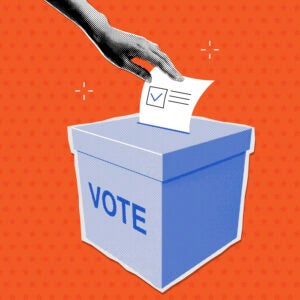Uber has rocketed from no formal ad business two years ago to being on pace to earn more than a billion dollars from advertisers this year.
Following the departure of Mark Grether, who spearheaded the Uber ad business and is now doing the same for PayPal, Uber is creating a three-legged ad business. The new strategy has separate GMs in charge of Uber’s rider app ads, grocery advertising and the Uber Eats restaurant and CPG ad business.
To run the Uber Eats Advertising unit, Uber recently hired Danilo Tauro, who previously led product for Amazon Advertising’s agency services and before that was Procter & Gamble’s global director of media, tech and data, as GM for the online food delivery advertising business.
AdExchanger caught up with Tauro about the new role and how Uber will approach its new retail media model, with one platform that supports three very different but interwoven advertising businesses.
AdExchanger: For your part of the Uber Advertising business, who is it that’s making those ad buys?
DANILO TAURO: There is a retail media network focused on restaurants. So someone may go into the app and type “Italian” or “Indian,” and restaurants and brands can bid for those spots.
But one thing I’m excited about is that once a person has selected a restaurant, there is a second choice: What do you attach to your meal?
There can be a second retail media network built on top of that restaurant and delivery or pickup choice. And that’s when the user is offered a chance to attach a product, like a soda or an ice cream. It could be SMBs upselling products or larger brands working with retailers [in the Uber Eats network]. Because once you, as a CPG, are in the retailer, what levers do you have, from an advertising perspective, to influence the attachment rate of your product rather than a competitor in those purchases?
That’s one area we’re trying to explain and explore. And it could also open up whole new opportunities for us.
How could it open up new opportunities?
The dynamic is very interesting with this retail media network, because of the two-step decisions that consumers can have.
The beauty of Uber’s advertising business is that the assets work well as a full-funnel offering. Advertisers, like consumers, use multiple apps for multiple services. It’s an omnichannel solution that works for more performance-based marketing.
Think of a food brand marketer. They may have an access point in the Uber Eats restaurant business, an access point on the grocery business and in the rider business.
[Editor’s note: For example, in the Uber Eats app, Coca-Cola products are in McDonald’s, Pepsi products are in Taco Bell, and CVS carries both. For the rider app, Coca-Cola or Pepsi might choose to target someone being driven to a McDonald’s or Pepsi, respectively, to encourage a purchase.]
Are you adding new ad supply, beyond the Uber Eats app itself?
The mobility and rider business last month had an announcement that, starting in the US, advertisers will be able to buy Journey Ads – the ads riders see in the Uber travel app – programmatically with Google, The Trade Desk and Yahoo. That’s one type of inventory that’s very compelling for Uber Eats.
Another announcement from a few weeks ago was the partnership with T-Mobile, because T-Mobile owns Octopus, which places screens and devices in the back seats of ride shares. That’s some 50,000 screens across the US, and we have an exclusive partnership.
If you look at how retail media networks have evolved, they start with the on-site activation, then they move to on-site plus off-site ads [this would be adding a third-party DSP], and then from performance-only advertising to performance plus branding. We have all the pieces along that track.
How do you try to balance the ad revenue opportunity with the customer experience, since those always seem to be in tension?
There are trade-offs at times, which is when ads can help monetize and increase revenues, but, you know, on the other side, if you look at other methods for the business, there will be a downside.
Those are all fair questions. And internally – take this with a grain of salt because I have been here only some weeks – but from this perspective [Tauro means his position within the media company, as opposed to his history on the advertising side], the challenge is to elevate ads from being just an extra revenue source to something that contributes to the overall business flywheel.
For us, gaining ad revenue at the expense of consumer demand for Uber apps is not a win. We want to elevate demand generation for the entire business, not just ad revenue.
How to resolve those trade-offs? For a tech company, it means you run experiments. You A/B test, learn about your customers and what’s right for restaurants and continue testing and iterating.
This interview has been edited and condensed















